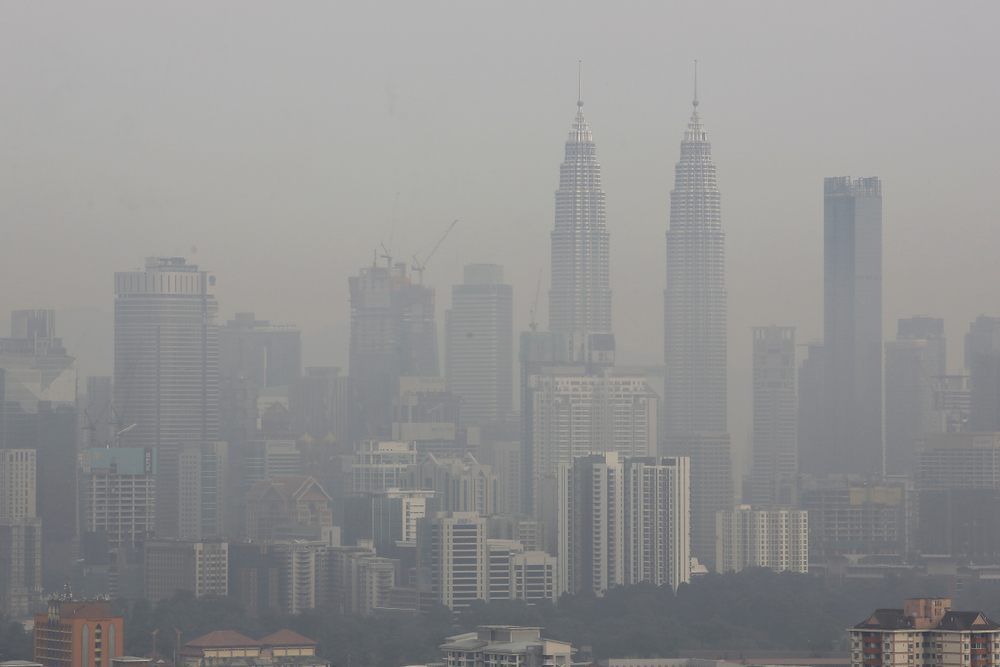The haze season in Asia poses significant health risks, making it crucial to arm yourself with facts and practical strategies.
The haze phenomenon in Asia has become a recurring environmental concern, affecting millions of people each year. Understanding the prevalence, health risks, and proactive measures to mitigate its impact is essential for safeguarding your well-being. This guide offers factual information and actionable strategies to help you navigate the haze season with confidence.
Understanding Haze: Prevalence and Causes
Haze is characterised by a dense concentration of air pollutants which occurs due to various factors such as forest fires, agricultural burning, and industrial emissions. In recent years, the prevalence of haze episodes in Asia has been on the rise, affecting countries across the region. This is due to transboundary haze, where haze goes beyond national borders and impacts multiple countries in a region, and can be exacerbated by other weather conditions, such as El Nino.
Health Risks Associated with Haze Exposure
Exposure to haze can have many detrimental effects on respiratory health, especially for high-risk populations such as children, the elderly, and individuals with pre-existing respiratory conditions. The microscopic particulate matter (PM) present in haze is able to penetrate deep into the lungs, leading to:
- Respiratory symptoms – Prolonged exposure to haze can irritate the airways, causing inflammation and lead to coughing, wheezing, or tightness in the chest.
- Respiratory infections – Fine particles in haze can impair the body’s immune system and make it easier for viruses and bacteria to enter the respiratory system, leading to infections such as bronchitis, pneumonia, and sinusitis.
- Asthma – Symptoms of asthma may be exacerbated, with individuals experiencing increased wheezing, breathlessness, and coughing.
- Irritation of the skin and eyes: Haze particles can exacerbate skin conditions such as acne and eczema, or cause itchiness of the eyes.
As such, it is crucial to take proactive measures to minimise exposure and protect your respiratory health during the haze season.
Practical Measures Against Haze
It is important to take practical measures against haze, in order to protect your health and well-being. By adopting certain measures, you can limit your exposure to harmful pollutants that have detrimental impact on the body. Some proactive steps you can take to protect yourself against haze include:
- Monitor Air Quality: Haze is typically measured on the Pollutant Standards Index (Singapore), or Air Pollutants Index (Malaysia), or the Air Quality Index (AQI). Monitoring these readings will allow you to adjust your outdoor activities accordingly. AQI readings that reach hazardous levels of (PM2.5 and PM10) suggest that even windows and doors should be closed to minimise outdoor pollutants, in indoor spaces. While readings of over 100 on the PSI or API indicate air that is hazardous to health.
- Air Purification Measures: Using indoor high-efficiency particulate air (HEPA) filters allows for adequate ventilation indoors.
- Using Personal Protective Equipment: This includes wearing filtered masks, such as N95 masks, to filter air, to reduce exposure to pollutants.
Implementing these measures will help to minimise some harmful impacts of haze on your body.
Promoting Respiratory Health: Lifestyle and Self-Care Tips
By including self-care practices in your daily life, individuals can take an active role in maintaining optimal respiratory function. Some things you can do to ensure your respiratory system remains healthy include:
- Staying hydrated
- Maintaining a healthy and nutritious diet
- Exercising regularly
- Avoiding smoke and other respiratory irritants
Community Engagement and Advocacy
Both community engagement and advocacy are important to promote respiratory health and to bring awareness to the public about haze. By taking proactive preventive measures, and supporting initiatives to improve air quality, we can create positive change for respiratory health in our communities.
Navigating the haze season in Asia requires awareness, preparedness, and proactive measures to protect your health and well-being. By understanding the prevalence, health risks, and practical strategies outlined in this guide, you can breathe easy and minimise the impact of haze on your daily life.
References:
- Haze – The National Environment Agency (no date) Default. Available at: https://www.haze.gov.sg/ (Accessed: 08 June 2023).
- Advisory (no date) National Environment Agency. Available at: https://www.nea.gov.sg/media/news/advisories/index/high-likelihood-of-el-nino-conditions-in-second-half-of-2023-will-increase-risk-of-transboundary-haze-affecting-singapore (Accessed: 08 June 2023).
- Ng, A. (no date) CNA explains: Why does Singapore need to prepare for haze this year?, CNA. Available at: https://www.channelnewsasia.com/singapore/haze-singapore-psi-n95-mask-air-purifier-3542186 (Accessed: 08 June 2023).
- FAQs on Haze Health Advisory (no date) Ministry of Health. Available at: https://www.moh.gov.sg/resources-statistics/educational-resources/haze/faqs-on-haze-health-advisory (Accessed: 08 June 2023).














